The campervan manufacturer NOTIN will celebrate its 100th anniversary in 2021. This brand, based in Panissières in the Loire, has been developing caravans for almost 100 years and now exclusively campervans that are associated with a certain idea of luxury.
Some remember these caravans, long recognizable by their wooden lanterns and shutters. While the materials have evolved, as well as the equipment, there are always optional shutters on Notin motorhomes as well as a real cabinetry assembled with the system of keepers.
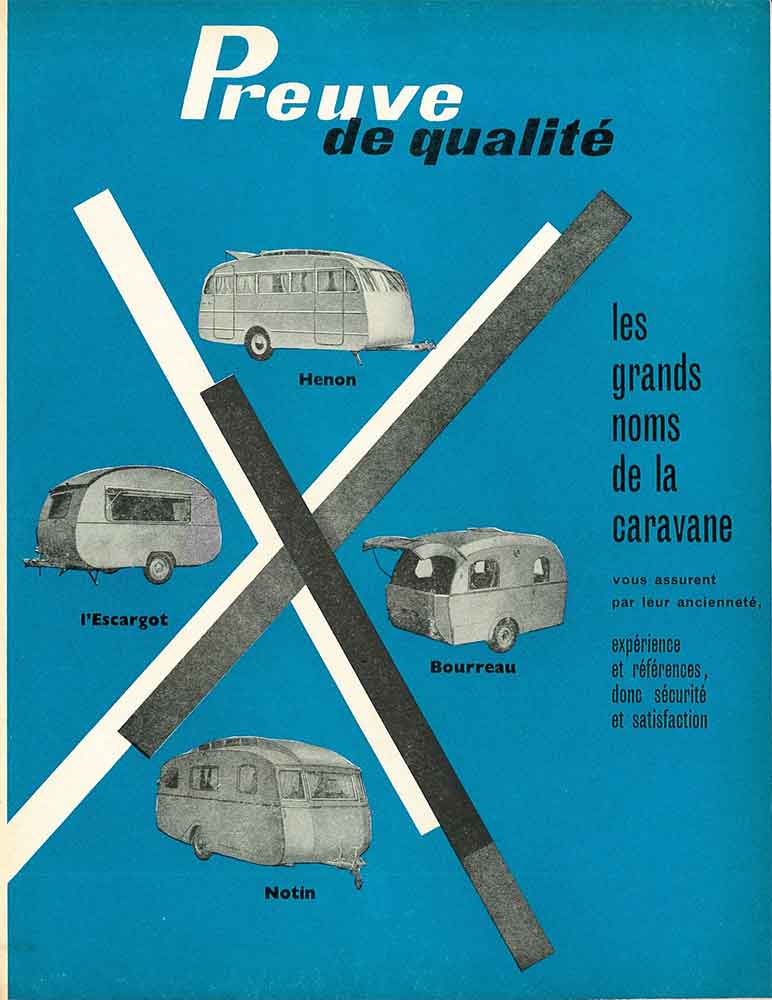
This Notin advertisement from 1959 shows the four great precursors of the Caravan in France who make a joint advertisement to tout their seniority and the quality of their manufacture. A little more than 10 years later, only Notin will survive the democratization of campervans by retaining its specialization in the construction of luxury motorhomes.
At the origins, camping trailers
But back to Notin’s origins. Francis Notin built from 1921 trailers of fairgrounds, first with animal traction, then, from 1928, automobile with his brother Joseph. In 1933, the Notin brothers created a tourist caravan at the request of a Nice lawyer. This model departs from the trailer thanks to its side and non-rear door, just as it adopts skylights, vectors of light and fresh air. The windows go down the walls. In 1934, Joseph Notin bought the workshop from his brother and devoted himself to the camping trailer. It was the first manufacturer to exhibit at the Paris fair in 1935.
With the Second World War production reorientions were operated as with many factories. The time is no longer for tourism and the brand is responding to the orders of the state to build caravans of public works, radiology, broadcasting, agrarian trailers and gasogens. After the war, tourism resumed, but it was still reserved for a certain elite.
The 1950s, 60s and 1970s, the popularization of camping holidays
In the 50s, 60s and 70s, many models were born ranging from 3 meters to 7 meters. Notin even produces double-axing caravans. Notin caravans come in two ranges, one light with aluminum shutters, optional equipment, and a tradition with fully equipped wooden shutters. Starting at a certain size or as an option, they often adopt a second door for toilets whose walls are lined with Panolac (french brand of covering wooden panel). The colours vary according to the times and tastes of their owners; pink, blue, black or orange. Various woods are offered, Oregon pine, speckled maple, mahogany, Zebrano.
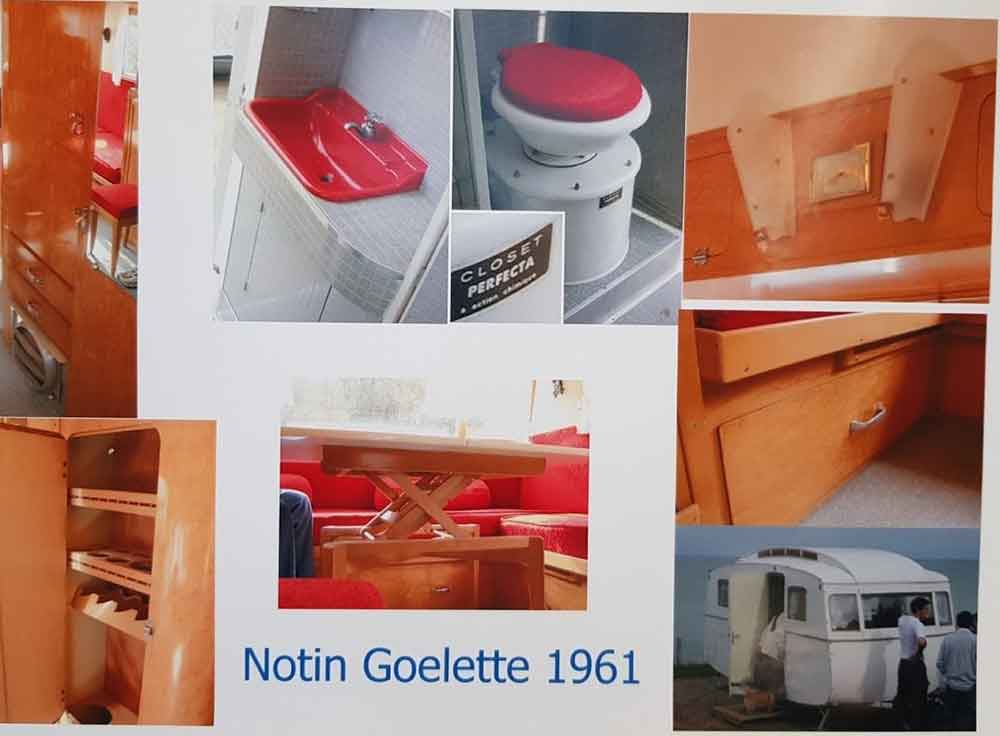
This Notin advertisement includes Notin excellence, the quality of the cabinetry, the rounded bar, the Notin table that fits into a coffee table or table for the meal, the bathrooms completely covered with Panolac (french brand of wooden covering panel) and equipped with a sink and toilet. They could also have a water heater. The Notin were designed to be autonomous as camping did not exist until the democratization of camping in the 1960s. We camp on the farm, in a close…
- Interior of a 1967 Goelette 180
- Oregon pine interior
The forms evolve relatively little over the years, always marked by a certain rounding that fades with the years. There are also some differences in the shape of the wheel arches or windows, rounded and then more square. The Notin of the 1970s are recognizable by a thin brown band at mid-height. They are named Benjamine (3m40), Chaumine (3m50- 610 kg), Hirondelle (3m50- 610 Kg), Residence (4m-900 Kg), Villula (4m50, 950 kg), Vedette (5m40-1100 kg), Ker (5m40-1300 kg), Corvette (5m40-1300 kg) or Florilège (6m -1400Kg). They are also distinguished by their number of lanterns ranging from one to eight.
In fact, it is sometimes difficult to recognize the different models because of multiple possible variations in both length/width and layout. They are custom made. Production is artisanal in the organization and the number of units produced. According to the 1975 figures of the Trade Union Chamber of Caravan Builders, which concerned only those registered more than 500 kg in PTAC, Notin produced 24 caravans in 1975 compared to 15,000 for Digue or nearly 8000 for Sterckeman. Notin caravans remain models reserved for a certain bourgeoisie at a time when camping and especially caravanning has already become widely democratized.
The Notin require for the most part models of powerful towers, American or Citroen DS as will be seen on the advertisements of the brand. At the end of the 1950s, Notin caravans were equipped with Hydrakup braking, Notin being an exclusive importer of this brand.
- Notin caravan flaps
- Notin twin axles – Super Residence model from 1972
- Notin advertising from the 1960s featuring Ms. Coursin Notin, daughter of the brand’s founder.
- Advertising document showing the Notin offer and its complexity for luxury production but very reduced in annual units. 1968/9. The customer’s choice will be objectively based on the vehicle’s traction capacity and the family budget!
- Advertisement of 1969 presenting the “admiral” caravan of the brand, a Florilège 600
Attempts to democratize the brand
The brand has repeatedly sought to produce cheaper caravans. In 1966, a new range was launched, the Astrée, which consisted of 3 models (3m20, 4m and 4m70).
1970 saw the emergence of a new “Caravelle” range. This strangely cubic caravan, which preserves the lanterns, is even offered in 2 or 4 places, 2 to 3 times cheaper than a classic Notin of the same size. This is based on an advertisement for a Notin license.
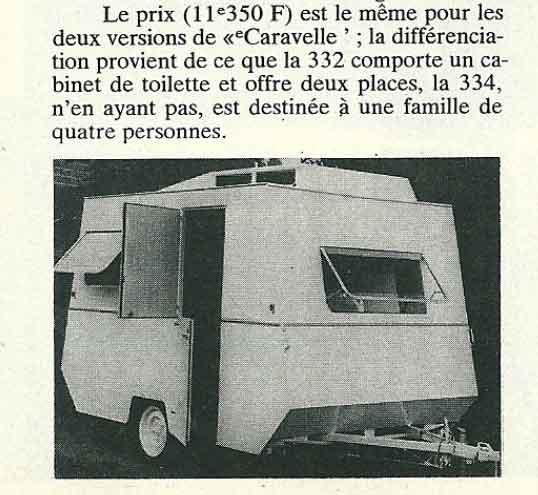
In the 1980s, it was the turn of the Notin 2000, but none of these attempts to “democratize” the brand finds its audience. That word is a bit strong. The aim is to offer a more modern caravan. A 2000 Notin of 4m is worth 42,000 francs when a Notin Tradition of the same size is worth 10,000 euros more. It is certainly more modern when compared to the old range but also lighter with a gross vehicle weight rating of 1000 Kg. The Adria brand, whose sales were very large at the time, cost in the 15,000 euros for a model of the same size. This is not, of course, the same standard. Notin is top of the range and will remain so. That is certainly what has allowed the brand to survive to the present day.
- Caravan 2000 Notin
- Caravan 2000 Notin
- Interiors always serious and well built in the Notin 2000. One always notices the presence of the clock in the center, between the pavilion closets.
The founder of the brand died in 1959, at the age of 56. The brand remained family until 1969 when Madame Coursin-Notin, her daughter, left the company. In 1970, one in two Notins was a motorhome. The factory was run in 1978 by Pierre Bruan and, since 1990, it has only produced motorhomes.
From “Living Car” to motorhome Notin
Today, we come across them on the roads, integral models of often impressive proportions. Their equipment is also worthy of the best luxury apartments. But when do their forerunners appear?
In 1951, two motorhomes, a Notin and Pierre Digue’s Passe-partout, were mentioned in the specialized press, both built on Renault 1000 kg chassis. The 2.3-l petrol engine of 14 hp develops 46 hp at 2,800 rpm and is served by a 3-speed gearbox. The bodywork is always the work of the developer who keeps only the driving cab and the Renault chassis, with flat roof or lanterns, hidden descending windows and all the comforts that we encounter in the Notin caravans.
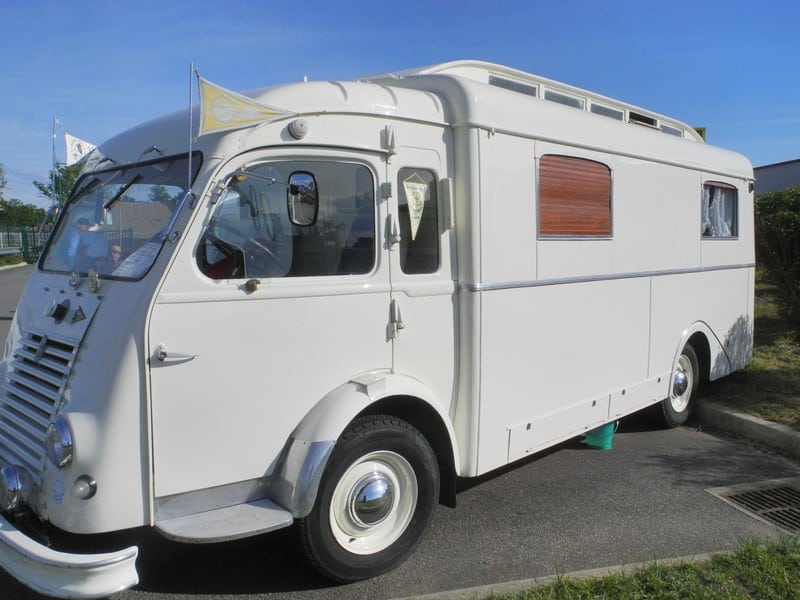
Camping-Car Notin of 1951 still rolling
In the 1970s, the proposed carriers were more numerous and chosen according to the size and weight of the cells. The lightest on Ford Transit, Peugeot J7 and Citroen C35. The lighter and heavy on Mercedes 408, 508 or Hanomag. There were also a few cells on Renault Estafette but the low power of this vehicle was not suitable for the weight to be taken.
- This Estafette base had to “suffer” to lead this “living-car” Notin on the roads…
- The NOTIN Living-car of this generation is built like caravans: an aluminum-coated “aviation” ash structure, except for the C35 van with a cut-out roof.
It should be noted that in the past french did not call a cell on carrier a motorhome but a “camping truck”. This sounded like a utilitarian vehicle and did not suit the NOTIN standing and its caravans “road yachts” nicknamed in several advertisements. The name “living-car” more chic was therefore chosen by the brand according to the will of Mrs. Andrée Coursin-NOTIN.
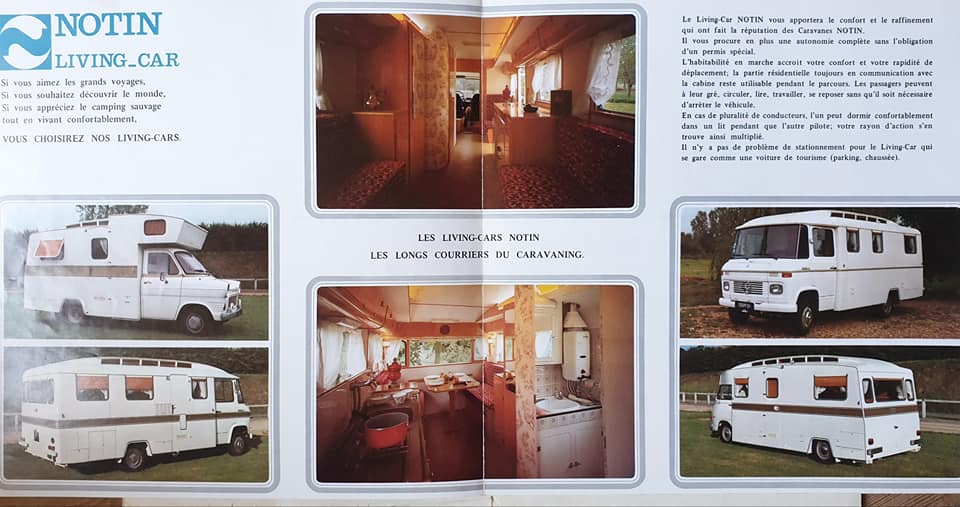
Comment from a Notin ad column, probably 1974
[quote align=”left”]”The Living-car Notin will bring you the comfort and refinement that NOTIN caravans are known for. It no longer gives you complete autonomy without the requirement for a special permit. Running livability increases your comfort and speed of travel; the residential part always in communication with the cabin remains usable during the journey. Passengers can move, read, work, rest without the need to stop the vehicle. In case of plurality of drivers, one can sleep comfortably in a bed while the other drives; this multiplies your range. There is no parking problem for the Living Car which parks like a normal car (parking, pavement)[/quote]
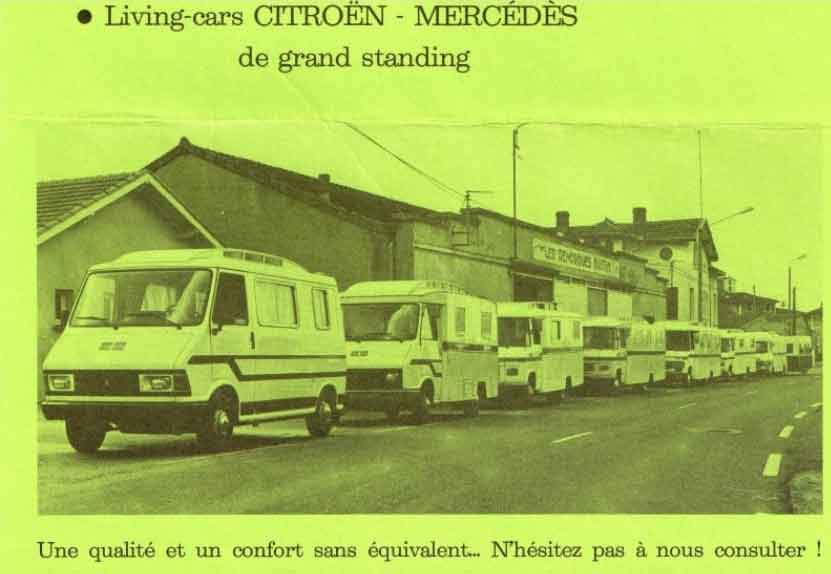
photo taken from a vintage advertisement in front of the factory still bearing the name “Notin trailers” – the porters are then Citroen or Mercedes. At the bottom is a Notin 2000.
In 2005, for the 90th anniversary of the brand, the company has 50 employees and produces 80 to 110 motorhomes per year. The brand will be 100 years old next year, the Success Story continues thanks to inventive entrepreneurs who do not forget the past.
Christophe Leroy, RCCF (Rétro Camping Club de France)member.
Sources:
Bruno Leroux et Maurice Girard, « Caravanes de chez nous », Ed. MDM, 1998
Sylvie et Franck Méneret, « Caravanes de France et d’ailleurs 1920-1960 », E-T-A-I
https://michelcaravanier.skyrock.com/
Magazine le Caravaning, sept 1966, N°132.
Facebook page Documentation old caravans

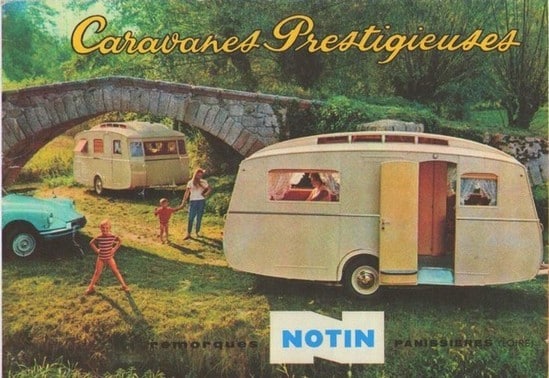
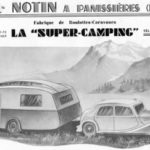
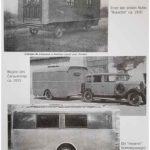
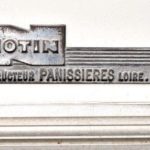
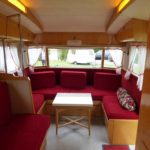
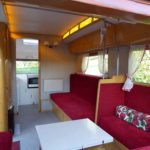
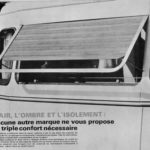
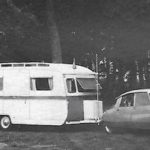
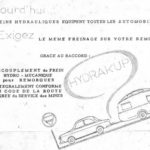
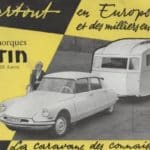
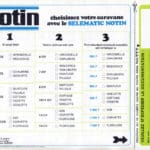
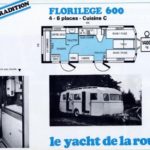
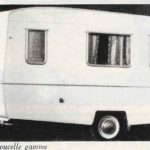
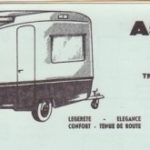
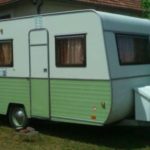
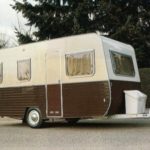
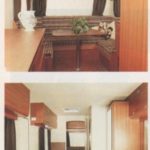
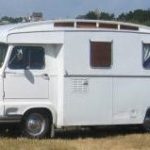
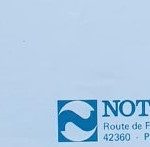
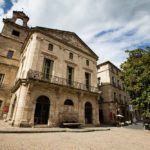

Leave a Reply